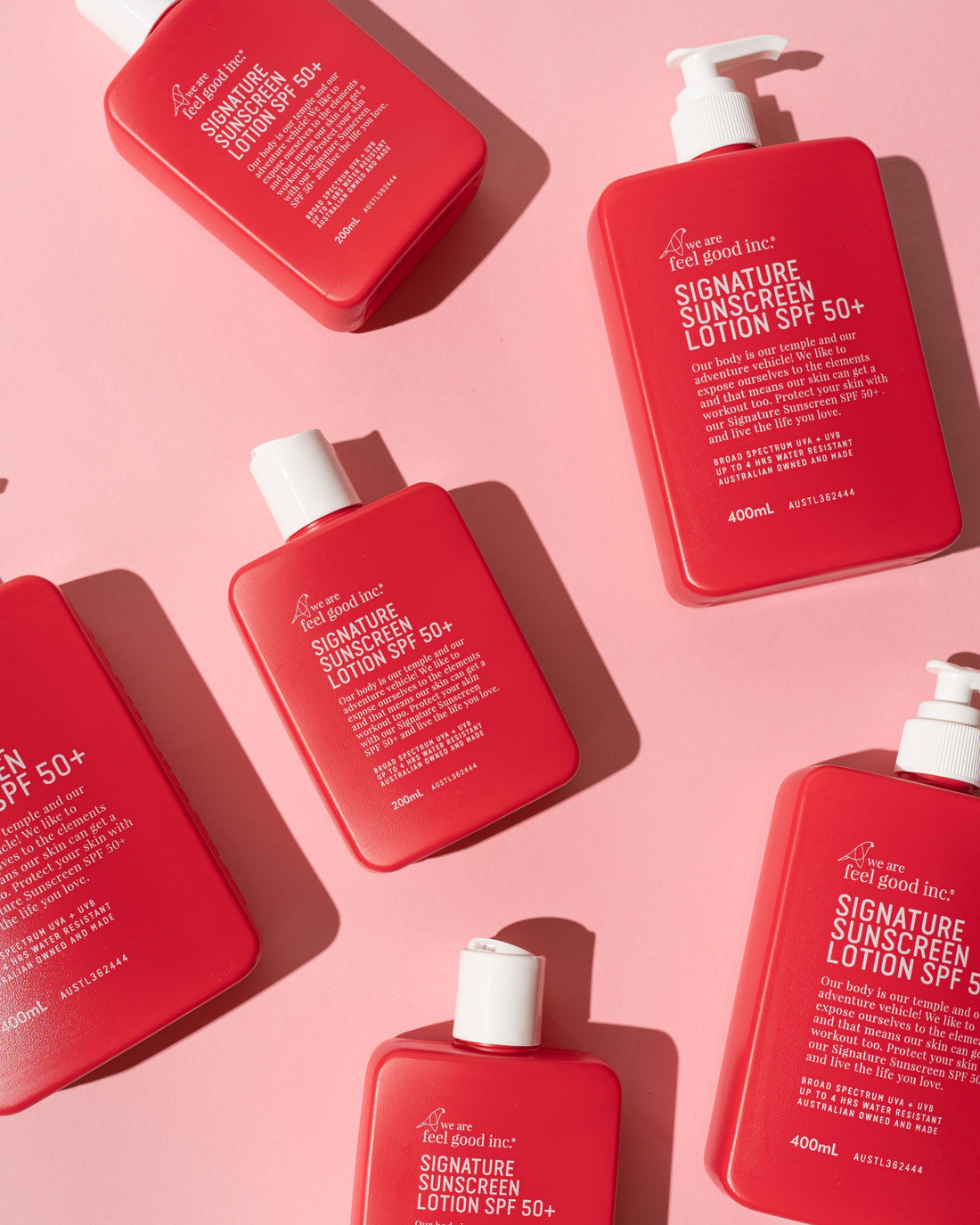
Sunscreen: What You Need to Know
Sunscreen. The essential, every.single.day component of your skincare regime. Most of us slather it on without a care in the world, never pausing to wonder what goes into this UV fighting lotion. We want to pull back the covers and let you in on what it all means.

What does SPF stand for?
SPF stands for Sun Protection Factor. It is a measure of how quickly, or slowly, your skin will start to turn pink, or sunburn. It is essentially a measure of UVB radiation, as this is the “sunburn component” of solar radiation that hits our skin. The other component is UVA, which penetrates into the skin and causes deeper damage, premature skin aging, and less of the actual sun "burn". The “broad spectrum” on the label signifies that the product covers UVA as well as UVB. A lot of countries across Asia now use more accurate measurement of UVA as they are more concerned about the skin aging effects of the sun as opposed to getting sunburnt.
How effective is sunscreen?
Well this obviously depends on the sunscreen and on the user. In Australia, a sunscreen that guarantees SPF 50 protection undergoes rigorous testing in order to prove that the protection advertised can be guaranteed. An SPF 50 that is applied as per the label instructions and reapplied as directed, should be extremely effective. It should mean it will take you 50 times longer to sunburn as opposed to exposed skin with no sunscreen.
A few factors that can lead to ineffective protection from sunscreen is if the sunscreen is not applied properly, in enough quantity, or reapplied as needed. For example, for each application you should use a minimum of 5mL for your face, neck, each leg & arm, and front & back torso, totalling 35mL. To work properly a sunscreen needs to spread evenly and settle onto the skin (it is recommended that sunscreen be applied at least 20 minutes before sun exposure). Anything that might disrupt this will make the protection less effective, such as uneven application or not allowing time to settle on the skin before swimming etc. It is also extremely important to never let your sunscreen reach temperatures above 30 degrees, as this can affect the stability of the formula and potential fail to provide the protection advertised on the label.
The safest way to protect yourself from the sun, on top of applying and reapplying sunscreen, is to wear protective clothing and a hat, seek shade and avoid the sun during the middle of the day when the sun is at its harshest.
How does sunscreen work?
All sunscreen filters essentially work the same way, by absorbing UV rays from the sun and converting them to heat energy that is either radiated from the skin or absorbed into the skin. There is a widely held myth that Zinc Oxide and Titanium Oxide somehow act like a shield to the sun reflecting harmful rays. This is a myth. These inorganic filters work essentially the same way as organic or “chemical” filters.
Is sunscreen safe?
TGA listed sunscreens are safe for consumers. This is why we have a government body that regulates the industry and monitors the latest research data in the safety and efficacy of ingredients used in sunscreens. When choosing a sunscreen, look for one which has an Australian License Number printed on the front of the bottle, "AUSTLXXXXXX".
Can I use sunscreen if I have allergies?
Yes you can, and you must! It may be more complicated finding one that suits you, but its important that you try. Before applying a new product, always patch test on a small area of skin such as your inner upper arm or thigh. Leave it on for at least a few hours and note any possible reactions.
It is estimated that 1% of the population may react to sunscreens. This reaction may be either a red rash that comes on after the cream is applied, or may develop only once exposed to the sun. Reactions from sunscreens may be caused by a variety of factors including UV filters such as Zinc Oxide or chemical filters, preservatives, fragrances or can be caused by any of the other common ingredients, including Vitamin E, Aloe Vera and Beeswax which are used in many cosmetics.
.....
Your We Are Feel Good Inc. product is Australian made and owned – tested to hold up in the toughest of climates. Our products do not contain parabens, oxybenzone, octinoxate or PABAs. We wanted a product that nourished and supported the skin without compromising sun protection capabilities, so we added skin-loving ingredients to sweeten the deal. Our sunscreens are enriched with Vitamin E and Aloe Vera, chosen for their antioxidant, hydration and nourishing properties.
